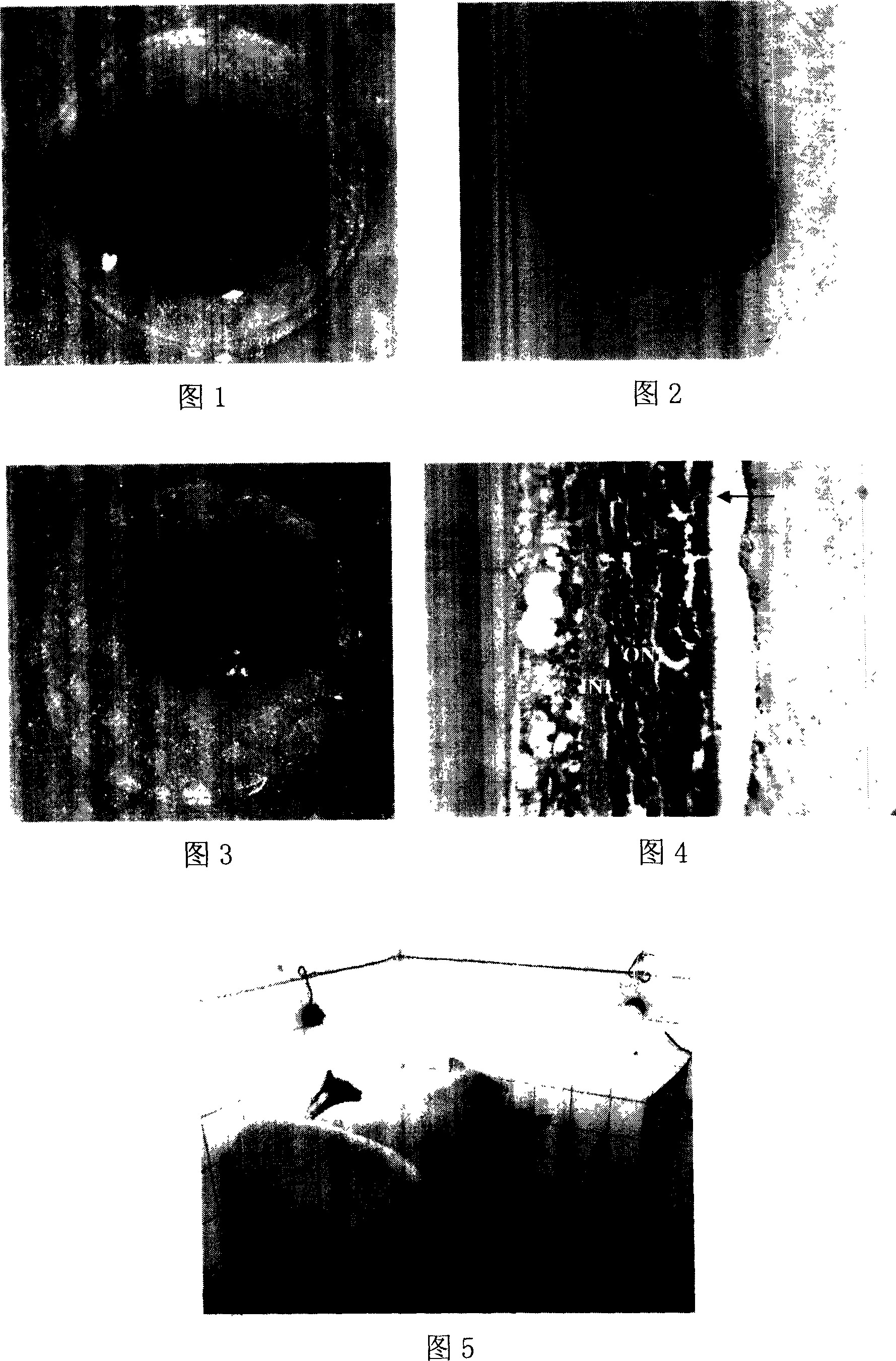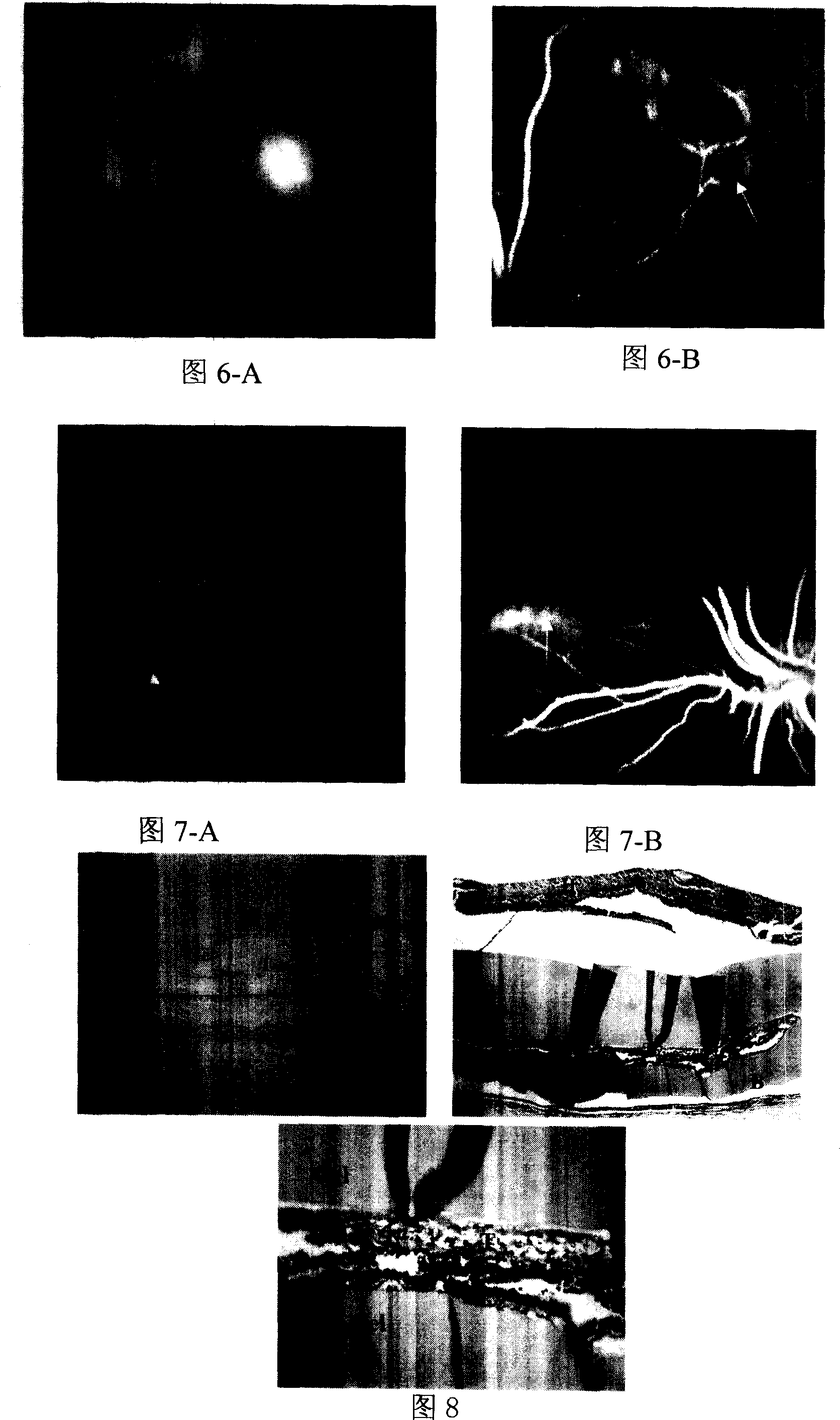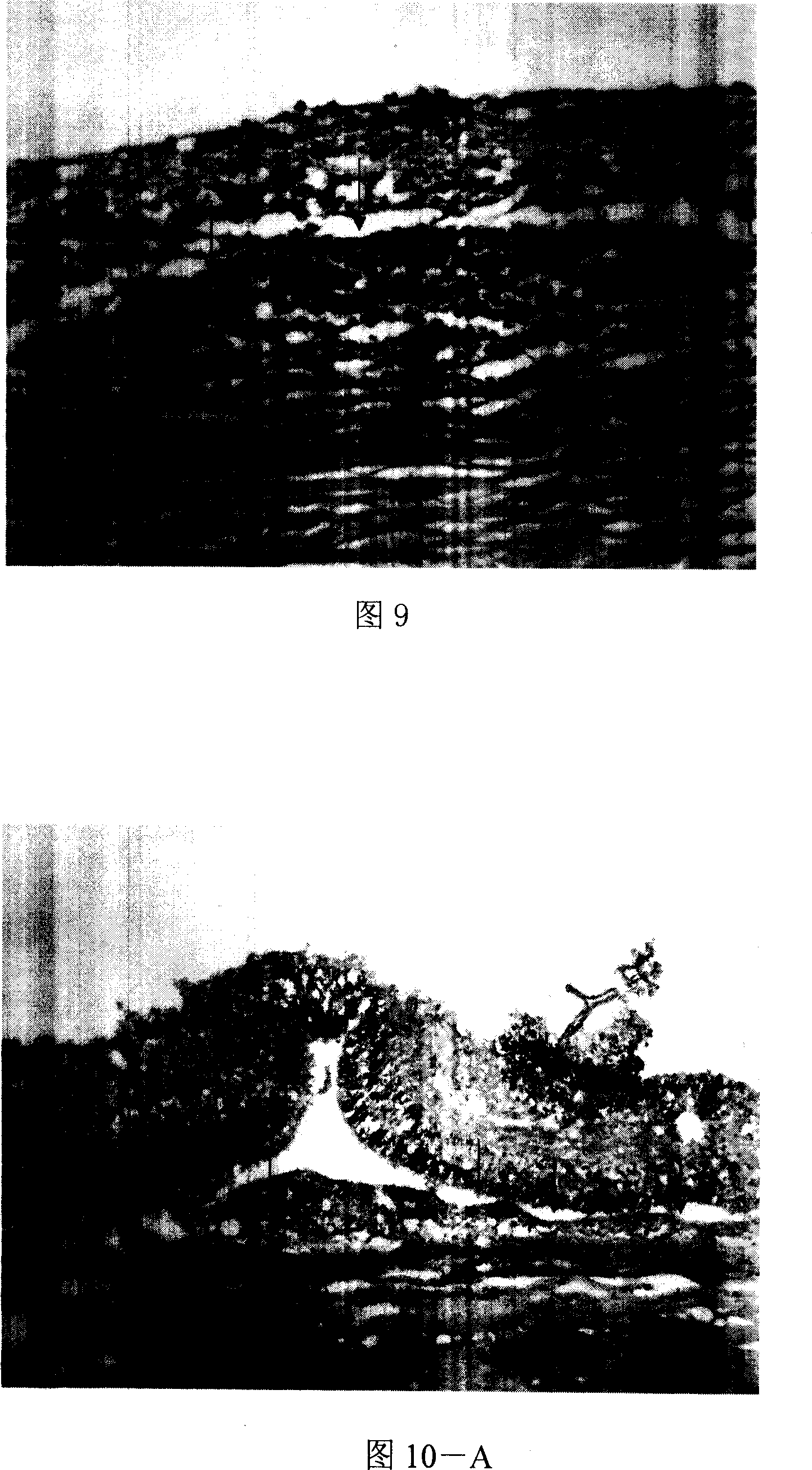Method for in vitro separation of full-thickness retina tissue
A technology of retina and tissue slices, applied in biochemical equipment and methods, tissue culture, prosthesis, etc., can solve the problems of lack of retina and achieve good tissue activity
- Summary
- Abstract
- Description
- Claims
- Application Information
AI Technical Summary
Problems solved by technology
Method used
Image
Examples
Embodiment 1
[0043] The preparation of embodiment 1 gelatin sheet
[0044] Weigh 2.5 grams of gelatin powder, put it into a sterilized small empty bottle, add 5 milliliters of sterile normal saline to make a concentration of 50%. After inserting a needle on the bottle cap, put it into a water bath and heat to boil. After the gelatin particles are completely melted, cool slightly and pour into a cylindrical mold with a diameter of 7mm. After cooling completely, remove the gelatin from the mold, cut it into a round gelatin sheet with a thickness of 150 microns with a vibrating slicer, and immerse it in 4°C normal saline for later use. .
Embodiment 2
[0045] Example 2 Preservation of full-thickness retinal slices
[0046] Take out the donor's full-thickness retina with choroid, spread it quickly on the surface of the gelatin sheet, with the choroid facing up, and immerse it in the preservation solution within 4 hours. The preservation solution can be commercially available Ames' solution, mid-term preservation solution, frozen agent, and No. 1 antifreeze and No. 2 antifreeze. (1) The composition of Ames' solution is: NaCl 120 (mM / L), KCl3.6 (mM / L), MgSO 4 1.2 (mM / L), CaCl 2 1.2 (mM / L), NaHCO 3 23 (mM / L), NaH 2 PO4 0.1(mM / L), Na 2 HPO4 0.4 (mM / L), Glucose 10 (mM / L). (2) The composition of the medium-term preservation solution is: take the cell culture medium DMEM as the base solution, add 0.05mmol / L dexamethasone (Shanghai Xinhua Pharmaceutical Factory), 2.5% chondroitin sulfate (US Sigma Company), 1% dextran (molecular weight 4×10 4 , Shanghai Chemical Reagent Factory), 10 5 U / L tobramycin, 0.03% L-glutamine, adj...
Embodiment 3
[0049] Embodiment 3 Laser micromachining and layer removal processing of full-thickness retinal sheet
[0050] The full-thickness retinal slice with the choroid attached was laid flat on the surface of the gelatin sheet with the choroid side up (Figure 1). Absorb the residual liquid on the surface of the choroid, using the 193nm excimer laser machine of American Eagle Eye System, with a pulse frequency of 400Hz, a tracking frequency of 400Hz, a laser spot of 0.95mm, a pulse energy of 1.6mJ, and a delay time of 4-8ms. For spot scanning, the aiming light is focused on the center of the anterior surface of the choroid, and the laser is emitted in the optical keratomileusis mode (Figure 2) until the white color of the cut area can be seen under the naked eye (Figure 3). The cutting depth of optical keratomileusis mode is 50-85 microns. The tissue after laser microcutting the choroid was double-sided embedded in gelatin, melted in a 37-degree water bath for 2 minutes to make a ful...
PUM
 Login to View More
Login to View More Abstract
Description
Claims
Application Information
 Login to View More
Login to View More - R&D
- Intellectual Property
- Life Sciences
- Materials
- Tech Scout
- Unparalleled Data Quality
- Higher Quality Content
- 60% Fewer Hallucinations
Browse by: Latest US Patents, China's latest patents, Technical Efficacy Thesaurus, Application Domain, Technology Topic, Popular Technical Reports.
© 2025 PatSnap. All rights reserved.Legal|Privacy policy|Modern Slavery Act Transparency Statement|Sitemap|About US| Contact US: help@patsnap.com



